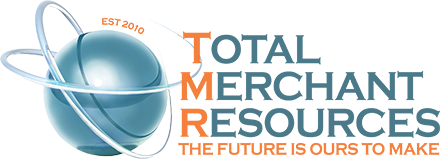
Leasing equipment can be a smart move for your business. Instead of paying a significant upfront cost to buy, leasing lets you use the latest equipment while spreading the payments. This approach can help companies of all sizes manage their cash flow better and keep their operations running smoothly.
This article will explore the ins and outs of equipment leasing. We’ll start by understanding what equipment leasing is and what its benefits are. Then, we’ll dive into the different types of leases available. Understanding these aspects will help you make informed decisions and leverage equipment leasing to grow your business.
Understanding Equipment Leasing and Its Benefits
Equipment leasing allows businesses to use equipment without buying it. You make monthly payments to use the equipment for a set time. This model offers several benefits that can help your business grow.
One significant benefit is cost savings. Buying new equipment can be very expensive and might strain your budget. Leasing helps you avoid a substantial upfront cost. You can spread out the expenses through monthly payments, making it easier to manage cash flow. This is particularly useful for small businesses and startups that must carefully allocate funds.
Leasing also gives you access to the latest equipment. Technology changes quickly, and equipment can become outdated fast. When you lease, you can upgrade to newer models at the end of your lease term. This ensures you’re always using the best tools available, which can improve your efficiency and competitiveness.
Another advantage is that leasing can offer tax benefits. In many cases, lease payments can be deducted as business expenses, reducing taxable income. This can make leasing an even more attractive option from a financial perspective.
Maintenance is often included in leasing agreements. This means the leasing company handles repairs and upkeep, saving you time and money. You can focus more on running your business and less on equipment issues.
Overall, equipment leasing is a flexible and cost-effective option that helps businesses stay up-to-date with the latest technology while managing cash flow and reducing risks.
Different Types of Equipment Leases
When it comes to equipment leasing, you have several options. Each type of lease serves different needs, so it’s essential to understand them to make the best choice for your business.
- Operating Lease: An operating lease is like renting equipment. You use the equipment for a short time, usually less than the equipment’s useful life. At the end of the lease term, you can return the equipment, renew the lease, or buy the equipment. This type of lease is ideal if you need equipment for a project or want to keep up with the latest technology.
- Capital Lease: A capital lease is closer to buying the equipment. You lease the equipment for most of its useful life, and at the end of the term, you can usually purchase it for a nominal fee. This type of lease is best for long-term needs and if you plan to own the equipment eventually.
- Master Lease: With a master lease, you can add new equipment to your lease under the same terms and conditions. This flexibility is helpful if your equipment needs to change over time. It ensures you can scale up without renegotiating each time you add new equipment.
- Sale and Leaseback: In a sale and leaseback arrangement, you sell your existing equipment to a leasing company and then lease it back. This option gives you immediate cash while allowing you to use the equipment.
- TRAC Lease: A Terminal Rental Adjustment Clause (TRAC) lease is commonly used for vehicles. You have various options at the end of the lease term, including returning the car, buying it, or extending the lease.
Choosing the right type of equipment lease depends on your business needs, financial situation, and long-term plans. Each lease type offers unique benefits and levels of flexibility, so consider what works best for your specific circumstances.
How to Evaluate Equipment Leasing Options
Evaluating equipment leasing options is crucial to choosing the best one for your business. Here are some key factors to consider:
- Costs and Terms: Compare the costs and terms of different leases. Look at the monthly payments, interest rates, and lease term costs. Check for any hidden fees, penalties, or extra charges. Make sure you understand the total financial commitment before signing.
- Flexibility: Assess the lease’s flexibility. Can you upgrade to newer equipment if needed? Are there options to extend the lease or purchase the equipment at the end of the term? The more flexible the lease, the better it can adapt to your changing business needs.
- Reputation of the Leasing Company: Research the leasing company’s reputation. Read reviews and ask for references. A reliable company will provide good customer service and support throughout the lease term. You want to work with a reputable company with a history of dealing fairly with its clients.
- Support and Maintenance: Determine what support and maintenance are included. Some leases cover regular maintenance, repairs, and technical support. This can save you money and downtime. Ensure you know who is responsible for maintaining the equipment and how easy it is to get support.
- Return and End-of-Lease Options: Understand the options at the end of the lease. Can you return the equipment, renew the lease, or buy the equipment? Knowing these options upfront will help you plan better for the future.
You can choose an equipment lease that meets your needs and helps your business grow by carefully evaluating these factors.
Steps to Apply for Equipment Leasing
Applying for equipment leasing involves several steps. Following these steps can help you navigate the process smoothly and quickly to get the necessary equipment.
- Assess Your Needs: Identify the equipment you need and why. Determine how the equipment will benefit your business and whether leasing is the best option. Make a list of the specific features and capabilities you require.
- Research Leasing Companies: Look for leasing companies specializing in the type of equipment you need. Compare their offerings, terms, and reputation. Narrow down your options to a few reputable companies.
- Gather Financial Information: Leasing companies want to evaluate your financial stability. Gather necessary financial documents, such as bank statements, balance sheets, and tax returns, and be prepared to provide details about your business’s economic health.
- Submit an Application: Fill out the application with the selected leasing company. Be honest and thorough in your responses. Provide all requested documentation to speed up the review process.
- Review the Lease Agreement: Review the lease agreement carefully once approved. Pay attention to the terms, costs, and conditions. Ensure you understand your responsibilities and the leasing company’s obligations. If anything is unclear, ask for clarification.
- Sign and Start: If you agree with the terms, sign the lease agreement. Arrange for the delivery and setup of the equipment. Ensure you know how to operate and maintain it for the best performance.
These steps can help secure your business’s equipment without unnecessary delays or complications.
Conclusion
Equipment leasing can be an intelligent way to keep your business up-to-date and competitive. With proper planning and evaluation, equipment leasing can help your business grow and succeed. This approach will help you get the most out of your equipment and ensure smooth operations.
Ready to explore equipment leasing for your business? Contact Total Merchant Resources today to discuss your options and find the best solution for your needs. Let our best cash flow lenders help you take your business to the next level!



